You can do photo walks almost daily if you don’t mind bringing your camera everywhere. I don’t know if there are many different topics for each day. In this article, I will cover some photo walk ideas suitable for beginners, but more experienced people may also find some helpful information and ideas.
By photo walking, we usually mean strolling in the town. But it doesn’t have to be a town, you can try nature or go indoors. The aim is to notice less popular subjects – objects to photograph. Before you go on the walk, you can also set a theme to follow and reflect on how you were doing afterward.
(The photos featured in this article were captured with 50 mm lens during a photo walk, exploring themes of monochrome and shadow play.)
Golden Hour Walk
If you decide to shoot during golden hour, you might need to do some planning ahead. Choose your location and use apps like PhotoPills or The Photographers Ephemeris to see where the sun will rise and set. Please arrive early, at least 20 to 30 minutes before it starts. Even the pre-dawn or post-sunset can be magical and have a nice vibe. During the hour, you can try to position subjects between you and the sun. As a result, you will get dreamy or glowing edge silhouettes. Instead of automatic white balance, use manual mode and set it to “Cloudy” or “Shade.”
Monochrome Challenge
You will rely on tones if you choose to shoot in black and white. Try to find strong contrasts with deep blacks, bright highlights, or everything in between. The harsh light can create interesting and contrasting spaces during the noon and afternoon. You must train your eyes to focus more on textures and patterns such as cracked paints, brick walls, rough concrete, or smooth metal. Black and white photography has the power to evoke emotions and timeless or nostalgic feelings. Look for subjects or objects that convey solitude, grit, or quiet beauty, such as an empty street or an old bench.
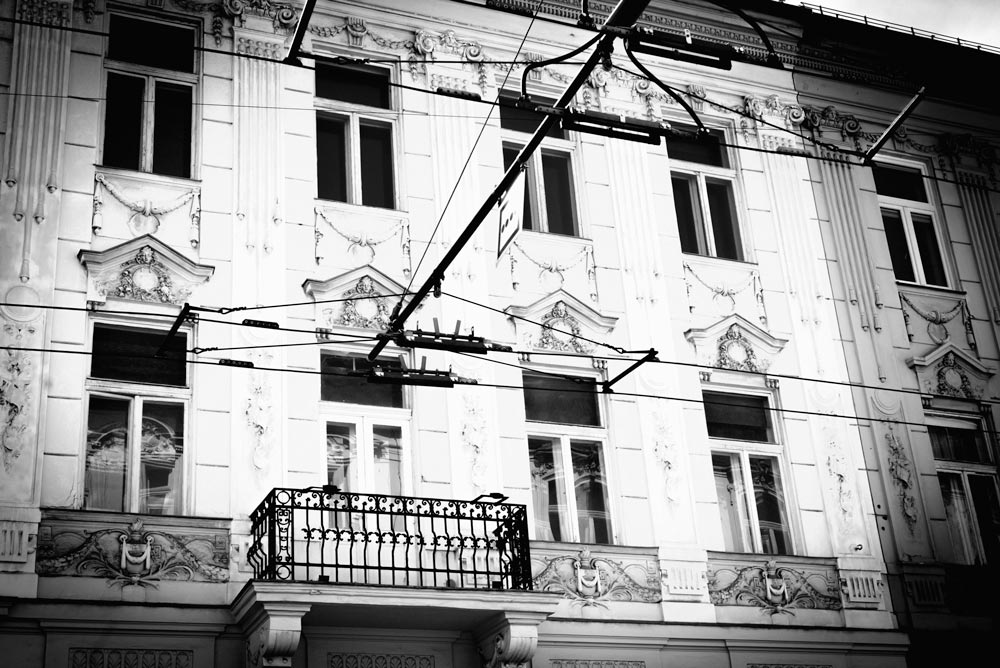
Pick a Color
Before the walk, choose a color you will hunt. You can choose it by season, but it would be better to be a contrasting color. For example, in winter, choose bright yellow or red in green parks. Or wait and shoot and see if the color “chooses you.” It doesn’t matter how small the colored part is; make it the centerpiece of your composition. Don’t just focus on the obvious; search for different hues and the place where the color appears.
Textures
You should not be afraid to get close and personal to capture textures and materials. You can use a macro lens and focus on cracks, bumps, ripples, rough wood, rusted metal, cracked pint, etc. Likewise, you can pair opposites – a smooth, soft brick wall or a crumbling surface. Some parts of the day can add to your composition side lighting or artificial light. Textures are nearly everywhere, in natural and urban environments. With textures, you don’t need to capture the whole object; make the texture your main subject.
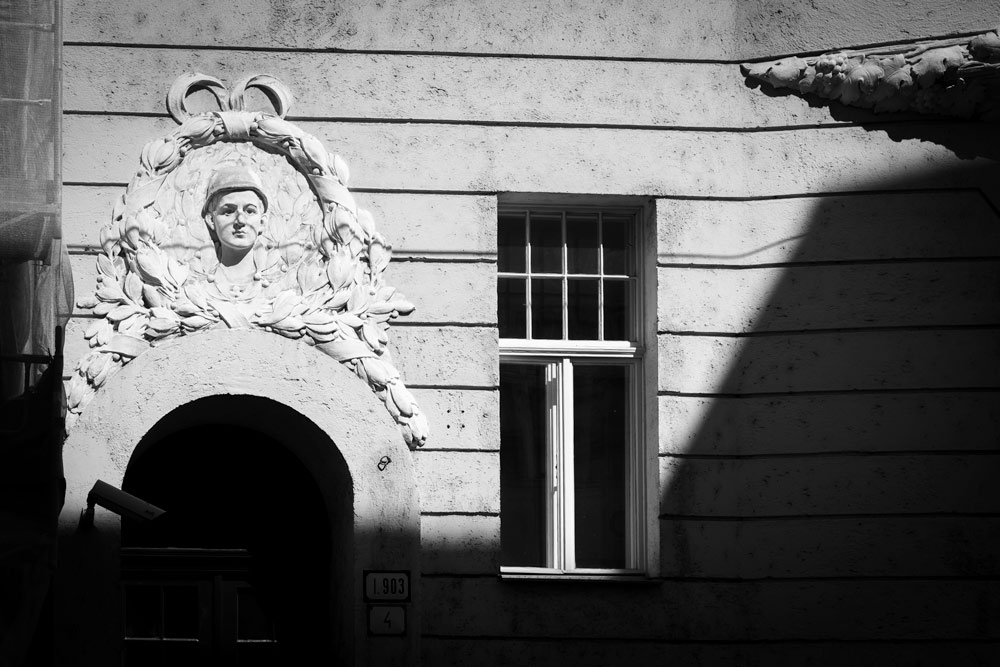
Reflections & Mirrors
You have probably seen many pictures with water reflections, but those are not the only sources of such effects. You can look for glass buildings, car windows, polished floors, and shopfronts. When shooting, use unusual angles and lower or raise the camera up. Reflections can show what is behind or above the subject and let you add more context and a second story to your shot. Take your time and wait for the moment when a person walks or a car passes into your scene.
Street Portraits
Life on streets moves quickly, so have your settings ready (aperture priority or fast shutter speeds). You can stay at a particular spot longer and wait until the scene unfolds naturally. You can also incorporate the background around the subject to give context to the photo, which will make it more alive. Look for interesting faces, lights, or outfits. When you do a close-up, it would be ideal to ask for permission or make a friendly gesture, saying that you would love to photograph that person.
Architectural Details
When exploring the surroundings, go closer to the buildings and look for ornate balconies, columns, tiles, window frames, cornices, rooftop shapes, and carved doors. Use elements like fences, doorways, or even plants to frame the main subject/object of your photo. Capture juxtapositions—the old and the new in collision, like wood next to steel, concrete next to ivy, etc.
One Lens, One Perspective
Pick only one lens, ideally a prime like the 35 or 50 mm. The key is to commit and adapt your shooting to this choice. With a fixed lens, you will be more actively moving in the environment to get the composition you want.
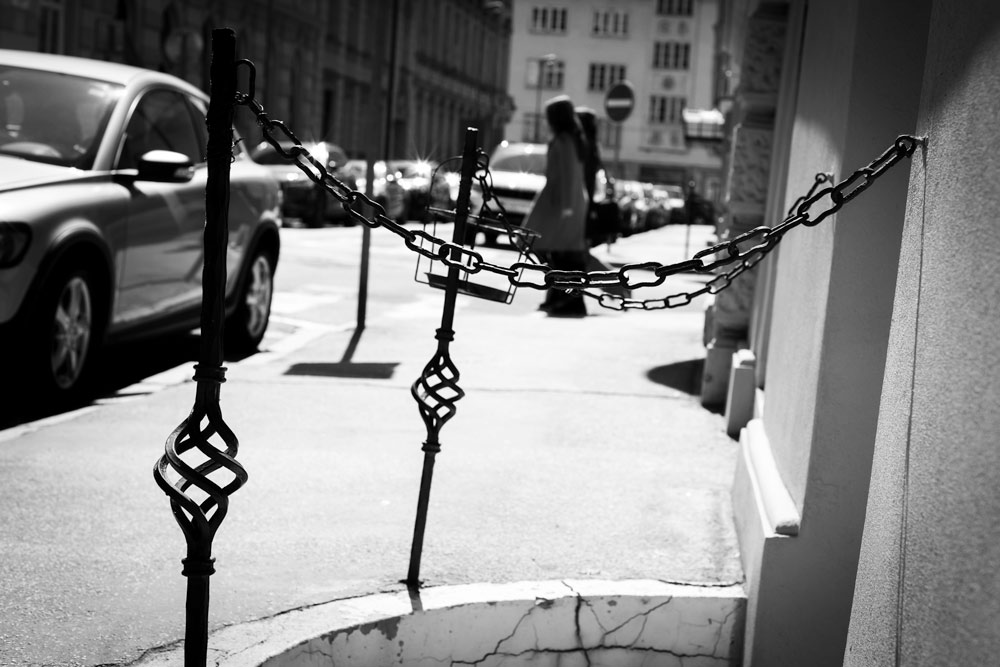
Nature in the City
Look for nature invasions such as grass growing through pavements, vines creeping up buildings, etc. Use contrasting features like a blooming tree in front of a glass tower. Visit parks, courtyards, green rooftops, or forgotten corners. If you are shooting at a place you have access to all year round, come to the same place and re-shoot it in different seasons. Urban life can also bring some wildlife into your nature in the city photos, such as birds on rooftops, bees, stray dogs, and cats.
Leading Lines
The list of photo walk ideas continues with leading lines such as roads, bridges, train tracks, rivers, shadows, rows of trees, or sidewalks. If you use them in the photo, they will guide the viewer’s eye through it and direct their attention. Choose to shoot from low angles – go down near the ground and notice the tile patterns. Leading lines could ideally lead to something like a person, a statue, or a vanishing point. Leading lines don’t necessarily need to be straight. Curves are interesting, too. You can combine both curves and diagonal lines to create energy and some sense of movement.
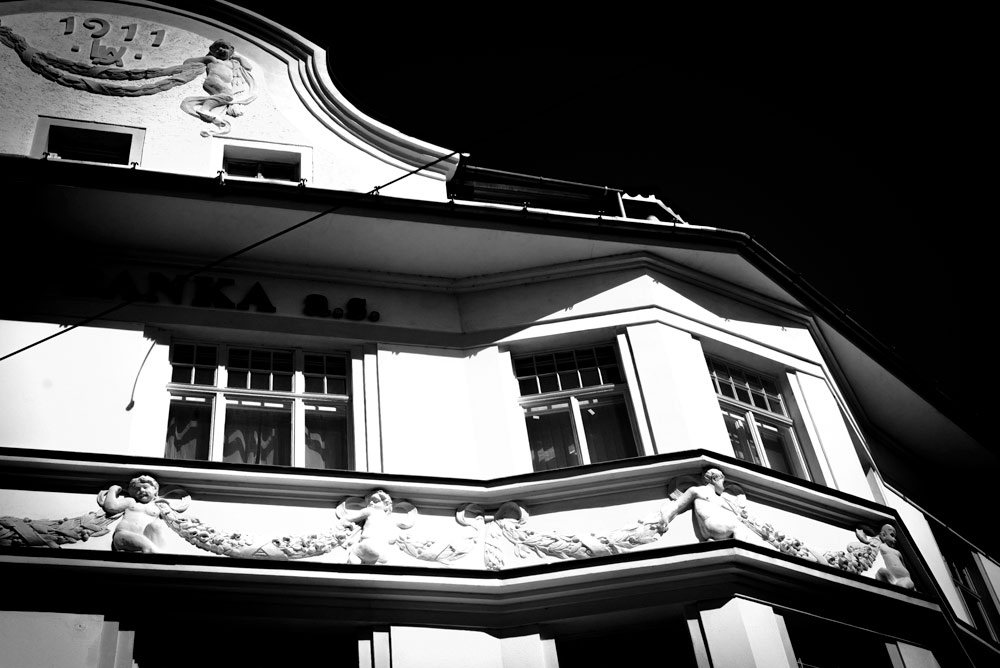

Abandoned & Forgotten
Within this theme, you can shift your focus on broken windows, rusted metal, peeling paint, cracked walls, etc. Make some wide-angle shots, but then go closer and show some details. If there is some light, like a beam streaming through cracks or broken windows, use it. Some of these places may be private property, and it is up to you if you stick to public areas or urban exploration spots.
Every Hour, One Photo
We will need a timer and start at a particular time – for example, at 9 AM, and shoot one photo every hour. You will be forced to work whatever will be happening around you at that given time. You don’t have to focus on one subject or mix things up. Furthermore, you will not wait for the perfect scene but shoot what is happening. After you finish, take all your photos and reflect – Do they portray a narrative? Do they reflect your mood, movement, or change in surroundings?
Shadow Play
Shadows should be the main subject, not just the accent. Shoot silhouettes on walls, repeating shapes on pavements, shadows of leaves, people, etc. Use them to hint at forms that are not fully visible, such as a person walking out of frame or a hand resting in light. Don’t forget your own shadow! Look for patterns—some elements like blinds, grates, or fences can cast shadows with strong lines.
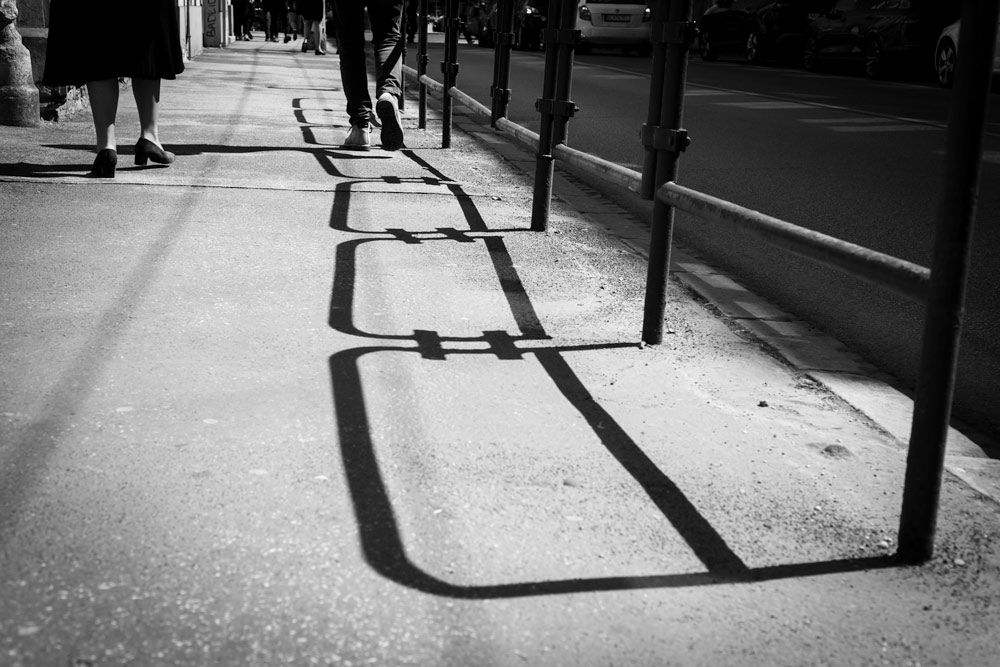
Signs of Life
Look for arrangements in urban life that hint at human presence, but there are no humans in the scene. For example, laundry hanging on a line, parked bicycles, and footprints in mud. Reflections, warm light, and deep shadows can support the feeling of presence or absence. Draw the attention to what was just there and might return.
Before & After Rain
The list idea on this list of photo walk ideas is about rain. Shoot the situation before it starts to rain. Observe the clouds, wind, and light – how they become a dramatic landscape. Also, capture people hurrying to hide. Capture that sense of anticipation and tension. After the rain, you can capture all the polished surfaces, deeper colors, shimmering streets, and droplets. Puddles can be a portal to upside-down words, splashes, or layered compositions that mix more elements.
For a deeper dive into turning everyday walks into creative adventures, explore Wander and Shoot: A Creative Guide to Photo Walks and Moody Monochrome: 12 Photography Ideas for Black & White Shots Indoors to keep your inspiration going when you need to stay inside.
Sources: